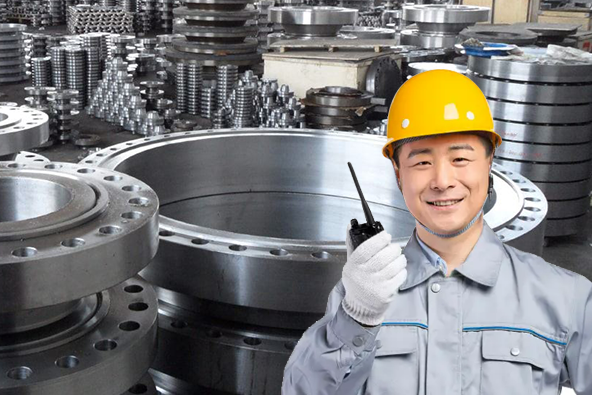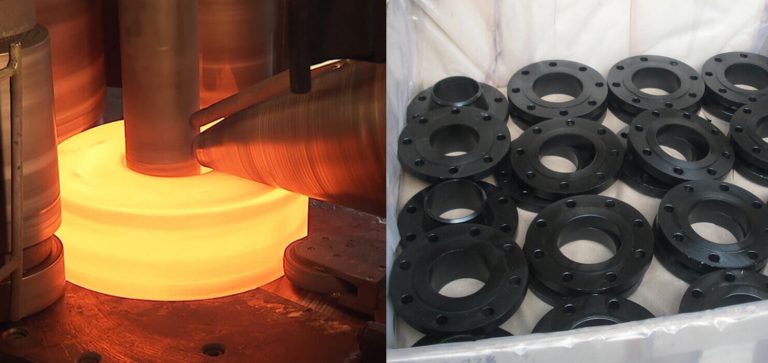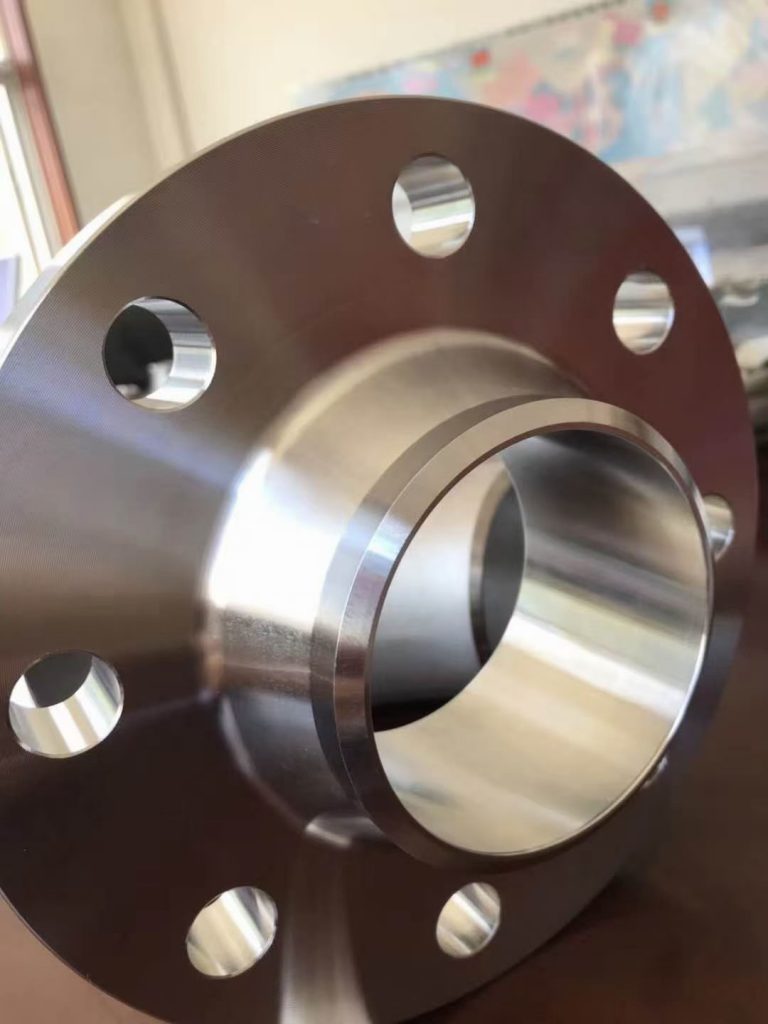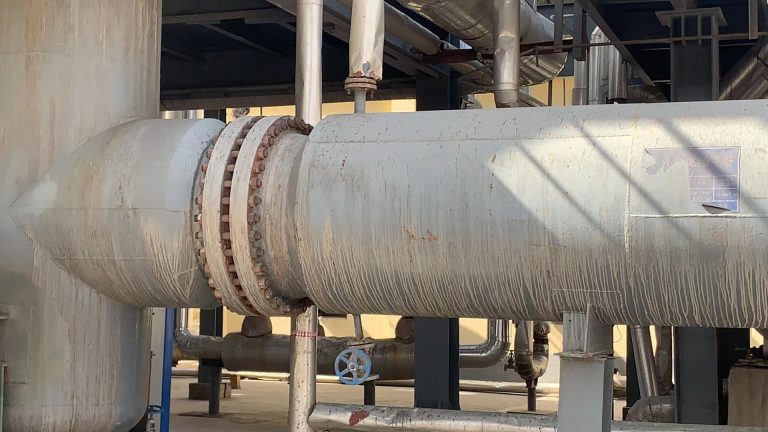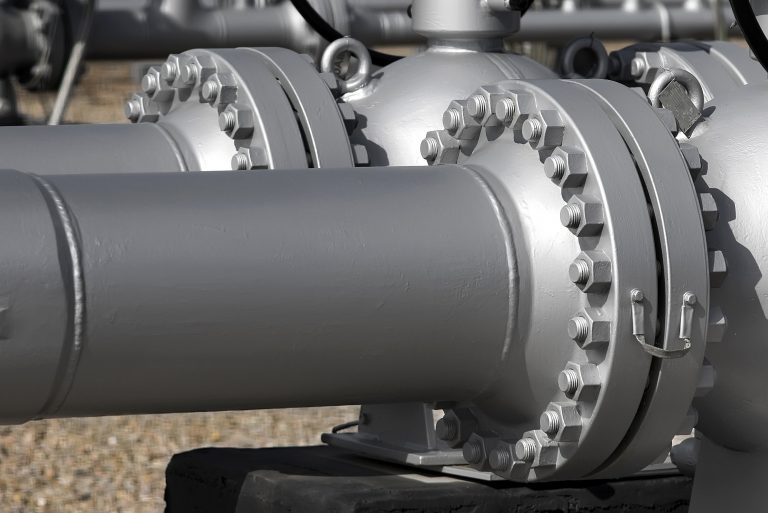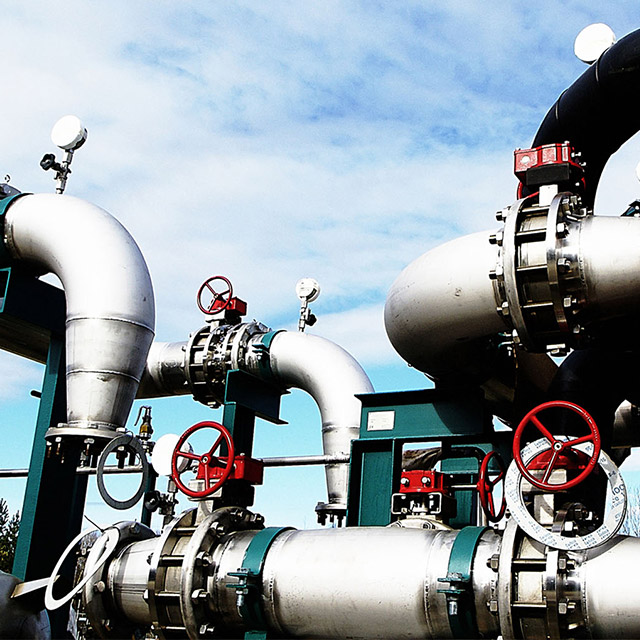I. Introduction
Flanges, integral components in industrial systems, play a critical role in ensuring the seamless connection of pipes and other equipment. The efficiency and safety of various industrial processes hinge on the correct installation and maintenance of flanges. In this comprehensive guide, we explore the nuances of proper flange handling to underline its significance in industrial operations.
Incorrect flange installation can lead to a cascade of operational challenges, ranging from leaks and inefficiencies to safety hazards. Following the correct procedures is paramount for achieving optimal performance, minimizing downtime, and preventing costly repairs. We delve into the step-by-step processes and best practices that define successful flange installation, offering insights that can significantly impact the reliability of industrial systems.
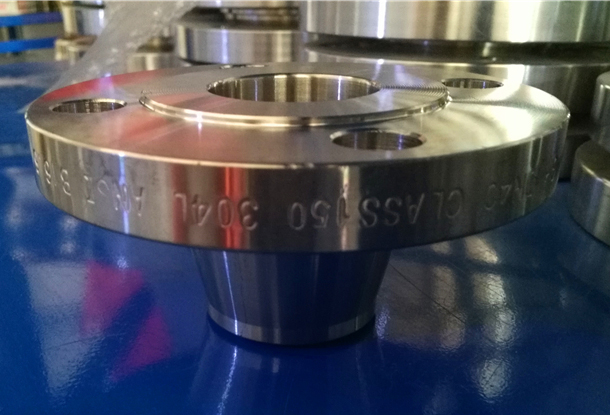
As a leading company in the field, YANHAO takes pride in delivering top-notch flange solutions tailored to meet the diverse needs of industries worldwide. Our commitment to precision engineering and cutting-edge technology positions us as a trusted partner for businesses seeking reliable and high-performance flange products. Throughout this guide, we’ll seamlessly integrate our expertise into the discussion, providing valuable insights derived from years of experience in the industry.
II. Understanding Flange Installation Basics
A. Definition of Flanges and Their Industrial Applications
Flanges are integral components in industrial piping systems, serving as connectors between pipes, valves, pumps, and other equipment. Essentially, a flange is a flat, circular disc with evenly spaced holes for bolts, allowing it to be securely attached to another surface. This connection method enables easy disassembly and reassembly of components, facilitating maintenance and repairs.
In industrial applications, flanges play a multifaceted role. They are crucial for:
- Pipeline Connection: Flanges allow the connection of pipes, enabling the seamless flow of liquids, gases, or other substances within industrial processes.
- Equipment Attachment: Flanges provide a means to attach various equipment components, such as valves and pumps, to pipelines or vessels, creating a cohesive and functional system.
- Facilitating Maintenance: The use of flanges simplifies maintenance tasks by allowing for the quick and efficient removal and replacement of components without extensive system disassembly.
- Pressure and Leak Management: Flanges help manage pressure and prevent leaks by providing a secure and sealed connection between components, ensuring the integrity of the overall system.
- Adaptability: Flanges come in various types and sizes, making them adaptable to different industrial settings and applications, from petrochemical plants to water treatment facilities.
Understanding the definition and applications of flanges is foundational to appreciating their importance in industrial operations. Proper installation and maintenance of flanges are critical for ensuring the reliability and efficiency of these systems.
B. Common Challenges Associated with Incorrect Installation
Despite their critical role in industrial processes, flanges can pose challenges when incorrectly installed. Addressing these challenges is essential for maintaining the integrity and functionality of industrial systems. Here are common issues associated with improper flange installation:
- Leakage: Poor alignment or inadequate tightening of bolts during installation can result in leaks. This compromises the efficiency of the system and may lead to environmental hazards or safety risks.
- Reduced Efficiency: Incorrect flange alignment can disrupt the smooth flow of fluids, causing turbulence and reducing the overall efficiency of the industrial process. This inefficiency can result in increased energy consumption and operational costs.
- Material Stress and Fatigue: Flanges that are not properly aligned or secured may subject materials to undue stress. Over time, this can lead to fatigue and, ultimately, component failure. Proper installation practices are crucial for extending the lifespan of the equipment.
- Safety Hazards: Inadequate installation can compromise the safety of the entire system. Flanges are often part of pressurized systems, and any failure due to improper installation may result in hazardous situations, including explosions or chemical releases.
- Costly Repairs and Downtime: Addressing issues arising from incorrect installation requires downtime for repairs. This downtime can be costly for industries dependent on continuous operations, emphasizing the importance of getting the installation right the first time.
To mitigate these challenges, adherence to proper installation procedures and industry best practices is imperative. YANHAO’s commitment to precision and reliability addresses these challenges, ensuring that its flange solutions stand up to the demanding requirements of industrial applications.
C. YANHAO’s Commitment to Precision and Reliability in Flange Solutions
YANHAO distinguishes itself in the industry through a steadfast commitment to precision engineering and the delivery of highly reliable flange solutions. This commitment is manifested in several key aspects of our approach:
- Advanced Manufacturing Techniques: YANHAO employs cutting-edge manufacturing technologies to ensure the highest level of precision in the production of flanges. Our processes adhere to industry standards, guaranteeing consistency and quality in every product.
- Quality Control Measures: Rigorous quality control measures are embedded throughout our manufacturing process. Each flange undergoes meticulous inspection to verify dimensions, tolerances, and material integrity, ensuring that only products meeting our stringent standards reach our customers.
- Customization for Optimal Performance: YANHAO recognizes the diverse needs of industries. Our flange solutions are not one-size-fits-all; instead, they are tailored to meet specific requirements, guaranteeing optimal performance and reliability in varied industrial applications.
- Comprehensive Testing Protocols: Prior to delivery, YANHAO subjects its flanges to comprehensive testing protocols. This includes pressure testing, material analysis, and stress testing to validate performance under real-world conditions. Our commitment to reliability extends to providing products that stand up to the most demanding operational challenges.
- Continuous Innovation: YANHAO remains at the forefront of technological advancements, incorporating innovations that enhance the functionality and longevity of our flange solutions. Our dedication to staying ahead of industry trends ensures that our products align with the evolving needs of our customers.
YANHAO’s commitment to precision and reliability is not just a promise; it’s embedded in our corporate ethos. As a result, our flange solutions are trusted by industries globally, providing peace of mind to businesses relying on robust and dependable infrastructure.
III. Step-by-Step Guide to Flange Installation
A. Detailed Overview of Each Installation Step for Different Types of Flanges
A. Detailed Overview of Each Installation Step for Different Types of Flanges
Flange installation is a nuanced process that varies depending on the type of flange being used. Below is a detailed guide for the installation of different types of flanges:
- Weld Neck Flanges:
a. Preparation: Ensure the welding surfaces are clean and free from contaminants.
b. Alignment: Properly align the flange with the pipe, ensuring the neck extends from the pipe end.
c. Welding: Employ appropriate welding techniques, such as TIG or MIG, to secure the flange to the pipe.
d. Inspection: Inspect the weld for quality, ensuring it meets required standards. - Slip-On Flanges:
a. Preparation: Clean the pipe and flange surfaces thoroughly.
b. Fitment: Slip the flange over the pipe end, allowing a slight gap for expansion.
c. Alignment: Align the flange with the pipe and tack weld it in place.
d. Final Welding: Perform the final weld around the flange perimeter.
e. Inspection: Inspect the weld and overall fitment for compliance with specifications. - Lap Joint Flanges:
a. Preparation: Ensure the lap joint and stub end have smooth, clean surfaces.
b. Assembly: Slip the lap joint flange over the stub end without any welding.
c. Bolt Tightening: Secure the flange to the stub end using bolts and nuts.
d. Final Checks: Verify proper alignment and tighten bolts evenly.
e. Inspection: Inspect the joint for proper sealing and alignment. - Threaded Flanges:
a. Thread Preparation: Clean and inspect the threaded portions of the pipe and flange.
b. Application of Thread Sealant: Apply a suitable thread sealant to ensure a secure seal.
c. Screwing: Screw the flange onto the threaded pipe until snug.
d. Final Checks: Inspect for proper alignment and tighten as necessary.
e. Leak Testing: Conduct a leak test to ensure a secure connection.
This comprehensive guide provides a step-by-step approach for installing various types of flanges, empowering professionals to execute precise installations tailored to their specific needs. These detailed instructions contribute to the overall success of industrial systems, emphasizing the importance of precision in the installation process.
B. Highlighting YANHAO’s Expertise in Producing Flanges Tailored for Easy Installation
YANHAO stands out as a leading provider of flange solutions, and our commitment to excellence is exemplified in our focus on producing flanges that prioritize ease of installation. Here’s how YANHAO ensures a seamless and user-friendly experience:
- Precision Engineering for Simplified Handling:
- YANHAO invests in precision engineering, ensuring that our flanges are intricately designed for easy handling during installation. The thoughtful design minimizes the complexities associated with aligning and securing flanges, making the overall process more straightforward.
- User-Friendly Design Features:
- Our flanges incorporate user-friendly design features, such as alignment guides and standardized dimensions, streamlining the installation process. These features not only reduce the margin for error but also enhance efficiency on the job site.
- Clear Documentation and Instructions:
- YANHAO provides comprehensive documentation accompanying each set of flanges. Clear and detailed instructions guide installers through the process, emphasizing key points for successful installation. This commitment to transparency and guidance ensures that even those new to our products can install them with confidence.
- Tailored Solutions for Diverse Applications:
- YANHAO recognizes that different industries have unique requirements. Our flange solutions are tailored to meet the specific needs of various applications, whether in petrochemical plants, water treatment facilities, or other industrial settings. This customization enhances compatibility and ease of installation in diverse environments.
- Dedication to Training and Support:
- YANHAO goes beyond delivering products by providing training and support to our clients. Our team is readily available to offer guidance on installation best practices, troubleshoot potential issues, and ensure that every installation meets the high standards set by YANHAO.
By highlighting these aspects, YANHAO not only emphasizes our commitment to producing high-quality flanges but also underscores our dedication to ensuring that our products are accessible and easy to install. Our expertise in precision engineering extends beyond manufacturing — it is embedded in every facet of the user experience.
C. Addressing Common Mistakes and Their Potential Consequences
Even with a detailed guide, common mistakes during flange installation can have significant repercussions. YANHAO places a strong emphasis on educating professionals about these pitfalls and their potential consequences, reinforcing the importance of precise installation practices:
- Improper Alignment:
- Mistake: Misaligning flanges during installation.
- Consequences: Uneven distribution of stress, increased risk of leaks, and compromised system integrity. YANHAO stresses the critical nature of precise alignment to prevent these issues.
- Inadequate Bolt Tightening:
- Mistake: Underestimating the importance of proper bolt tightening.
- Consequences: Loose bolts can lead to flange separation, causing leaks, system inefficiency, and safety hazards. YANHAO emphasizes the need for uniform and accurate bolt tightening.
- Insufficient Sealing:
- Mistake: Neglecting proper sealing techniques.
- Consequences: Inadequate sealing can result in leaks, affecting system efficiency and posing safety risks. YANHAO advocates for meticulous attention to sealing details to maintain the integrity of the flange connection.
- Neglecting Material Compatibility:
- Mistake: Using incompatible materials for flange components.
- Consequences: Corrosion, material degradation, and compromised structural integrity. YANHAO provides guidance on material compatibility, emphasizing the importance of using materials suitable for the intended application.
- Insufficient Inspection:
- Mistake: Failing to conduct thorough inspections post-installation.
- Consequences: Undetected defects may lead to operational issues, downtime, and costly repairs. YANHAO stresses the need for meticulous inspections to identify and address potential issues early.
Addressing these common mistakes and their potential consequences is crucial for ensuring the longevity and reliability of industrial systems. YANHAO’s commitment to education and support extends beyond product delivery, aiming to empower professionals with the knowledge needed to avoid these pitfalls and achieve successful flange installations.
IV. Best Practices for Flange Maintenance
A. Importance of Regular Maintenance in Ensuring Long-Term Functionality
Regular maintenance is the linchpin of ensuring the long-term functionality and reliability of industrial systems, with flanges being no exception. Here’s why a commitment to routine upkeep is integral:
- Preventive Approach to System Health:
- Regular maintenance allows for the early detection and correction of potential issues before they escalate. This preventive approach mitigates the risk of unexpected failures, minimizing downtime and costly repairs.
- Optimizing Operational Efficiency:
- Flanges play a pivotal role in the seamless functioning of industrial processes. Regular maintenance ensures that these critical components operate at peak efficiency, contributing to the overall effectiveness and productivity of the system.
- Extending Equipment Lifespan:
- Well-maintained flanges contribute to the longevity of the entire industrial system. Addressing wear and tear, corrosion, or alignment issues proactively extends the lifespan of components, reducing the frequency of replacements and associated costs.
- Ensuring Safety and Compliance:
- Industrial safety standards often mandate regular maintenance to ensure compliance. Regular inspections and upkeep not only enhance safety but also demonstrate a commitment to regulatory requirements, preventing potential legal and operational consequences.
- Cost Savings in the Long Run:
- Though it requires an initial investment, regular maintenance proves cost-effective in the long run. The costs associated with unexpected breakdowns, emergency repairs, and prolonged downtime far exceed the investment in routine maintenance activities.
- Preserving System Integrity:
- Flanges are integral to the integrity of the entire system. Regular maintenance preserves this integrity by addressing issues that could compromise the functionality of the flanges, safeguarding the overall reliability of the industrial infrastructure.
By highlighting the importance of regular maintenance, YANHAO underscores its commitment to supporting industries in achieving sustained functionality, operational excellence, and cost-effective asset management.
B. YANHAO’s Recommended Maintenance Schedule and Checklist
YANHAO recognizes the paramount importance of systematic maintenance to ensure the enduring functionality of our flange solutions. Our recommended maintenance schedule and checklist serve as a comprehensive guide for professionals tasked with the care of industrial systems:
- Regular Inspection Intervals:
- YANHAO advises periodic inspections, with frequency depending on factors such as operating conditions, environmental influences, and industry standards. Common intervals include quarterly, semi-annual, and annual inspections.
- Visual Inspection:
- Conduct a thorough visual examination of flange components for signs of corrosion, wear, or misalignment. Look for any visible leaks, irregularities in bolt tightness, or damage to the sealing surfaces.
- Bolt Tightening and Torque Checks:
- Regularly check and tighten bolts according to specified torque values. Ensure uniform bolt tightness to prevent uneven stress distribution and potential leakage.
- Sealing Integrity Assessment:
- Evaluate the condition of gaskets and seals. Replace any damaged or deteriorated sealing materials to maintain the integrity of the flange connection and prevent leaks.
- Surface Condition Analysis:
- Inspect flange surfaces for any irregularities, pitting, or signs of erosion. Address any surface imperfections promptly to prevent further deterioration.
- Corrosion Protection Measures:
- Implement corrosion protection measures, such as applying protective coatings or corrosion-resistant materials. This is particularly crucial in corrosive environments to extend the lifespan of flange components.
- Alignment Verification:
- Verify the alignment of flanges to prevent stress concentration and potential joint failure. Adjust alignment as needed and address any issues with mating surfaces.
- Documentation and Record Keeping:
- Maintain detailed records of all maintenance activities, including inspection dates, findings, and actions taken. This documentation serves as a valuable reference for future maintenance and compliance purposes.
By adhering to this maintenance schedule and checklist, professionals can systematically address potential issues, optimize the performance of YANHAO’s flange solutions, and ensure the sustained reliability of industrial systems. YANHAO remains committed to supporting our clients with practical guidelines for effective maintenance practices.
Here is an example format for a commonly used Flange Maintenance Checklist:
Flange Maintenance Checklist
| Check Item | Frequency | Inspection Method | Action for Identified Issues |
|---|---|---|---|
| Visual Inspection | Quarterly | Inspect for visible damage, corrosion, or foreign objects on flange surfaces and surrounding areas. | Document and further investigate any issues found. Take corrective action if necessary. |
| Bolt Tightening and Torque Check | Semi-annual | Use a torque wrench to check the tightness and torque of flange bolts according to specifications. | Confirm uniform bolt tightening, adjust, and tighten any loose bolts. |
| Seal Integrity Check | Quarterly | Evaluate the condition of gaskets and seals. Replace damaged or deteriorated sealing materials. | Replace damaged or deteriorated seals immediately to maintain flange connection integrity and prevent leaks. |
| Surface Smoothness Check | Quarterly | Inspect flange connection surfaces for irregularities, pitting, or erosion. | Document any surface imperfections and conduct further inspection and maintenance as necessary. |
| Alignment Verification | Quarterly | Verify the alignment of flanges to prevent stress concentration and joint failure. | Adjust flange alignment as needed and address any issues with mating surfaces. |
| Corrosion Protection Measures | Annual | Implement corrosion protection measures such as applying protective coatings or using corrosion-resistant materials. | Repair or reapply coatings when damage is identified to extend the lifespan of flange components. |
| Material and Marking Check | Annual | Check that the flange materials are as specified and confirm the presence of correct markings. | Document any deviations from specifications and take corrective action as needed. |
| Emergency Leak Test | Quarterly | Simulate a leak during emergency testing to ensure the tightness of the flange connection. | Take immediate corrective action if any issues are detected and conduct further inspection and repairs. |
| Documentation and Reporting | After Each Check | Record inspection results, including issues, solutions, and future plans. Submit inspection reports to ensure accuracy and timeliness. | Maintain accurate records for reference and compliance purposes. |
This checklist provides a basic framework that can be adjusted based on the specific industrial environment and types of flanges in use. Ensure to customize or add inspection items based on the specific maintenance needs of your flange connections.
C. Tips for Identifying and Addressing Potential Issues Proactively
Proactive identification and addressing of potential issues are crucial for maintaining the reliability of flange connections. Here are practical tips to help professionals spot early signs and take corrective action before problems escalate:
- Regular Visual Inspections:
- Tip: Conduct frequent visual inspections of flange surfaces, bolts, and surrounding areas.
- Action: Look for signs of corrosion, leaks, or irregularities. Address any visible issues promptly to prevent further deterioration.
- Utilize Non-Destructive Testing (NDT) Techniques:
- Tip: Implement NDT techniques like ultrasonic testing or radiography for a more in-depth analysis.
- Action: Use NDT to identify hidden defects, such as internal corrosion or material weaknesses, allowing for early intervention.
- Monitor Bolt Tightness and Torque:
- Tip: Regularly check bolt tightness and torque according to specifications.
- Action: Ensure uniform bolt tightening, addressing any loose bolts immediately to prevent stress concentration and potential leaks.
- Implement Corrosion Monitoring:
- Tip: Utilize corrosion monitoring tools or sensors.
- Action: Track corrosion rates and patterns to identify potential areas of concern. Implement preventive measures or coatings as needed.
- Utilize Condition Monitoring Systems:
- Tip: Implement advanced monitoring systems for real-time data on temperature, pressure, and vibrations.
- Action: Set threshold alerts for abnormal readings, allowing for timely investigation and proactive maintenance.
- Regularly Check Seals and Gaskets:
- Tip: Periodically inspect seals and gaskets for wear and tear.
- Action: Replace damaged or deteriorated seals promptly to maintain an effective seal and prevent leaks.
- Alignment Verification:
- Tip: Regularly verify the alignment of flanges.
- Action: Address any misalignments promptly to prevent stress concentration and maintain the structural integrity of the flange connection.
- Training and Awareness Programs:
- Tip: Provide training for personnel on early issue identification.
- Action: Foster a culture of vigilance by educating staff on the importance of proactive identification and reporting of potential issues.
- Historical Data Analysis:
- Tip: Analyze historical maintenance and inspection data.
- Action: Look for trends or recurring issues, enabling the development of targeted preventive measures and continuous improvement strategies.
- Emergency Leak Response Drills:
- Tip: Conduct periodic emergency leak response drills.
- Action: Ensure that personnel are familiar with emergency procedures, enabling a swift and effective response in case of unexpected leaks.
By incorporating these proactive tips into the maintenance routine, professionals can significantly reduce the likelihood of unexpected failures, minimize downtime, and extend the lifespan of flange connections. YANHAO remains committed to supporting industries in implementing these best practices for optimal flange performance.
V. Expert Insights: Interview with YANHAO’s Engineering Team
A. Q&A Session with YANHAO’s Engineering Experts on Flange Installation and Maintenance
Moderator: Thank you for joining us today. We have YANHAO’s esteemed engineering experts with us to shed light on crucial aspects of flange installation and maintenance. Let’s dive into the questions.
1. Moderator: What are the key considerations for successful flange installation, and how does YANHAO address these in its products?
YANHAO Engineer: Precision is paramount in flange installation. Our products are engineered with meticulous attention to detail, ensuring proper alignment, standardized dimensions, and user-friendly design features. This focus on precision simplifies the installation process and minimizes the risk of errors.
2. Moderator: How does YANHAO ensure the reliability of its flange solutions over time, and what maintenance practices do you recommend for optimal performance?
YANHAO Engineer: Reliability is ingrained in our approach. We recommend a proactive maintenance schedule, including regular visual inspections, bolt tightening, and seal integrity checks. This preventive maintenance approach, combined with our product’s durability and customization, ensures long-term reliability.
3. Moderator: Can you share insights on the most common challenges professionals face during flange installation and how YANHAO’s products address these challenges?
YANHAO Engineer: Common challenges include misalignment, inadequate sealing, and bolt tightening issues. YANHAO products mitigate these challenges through user-friendly design, precision engineering, and customization for specific applications. Our solutions simplify the installation process and enhance overall system performance.
4. Moderator: What role does material selection play in the performance and longevity of flange solutions, and how does YANHAO approach this aspect?
YANHAO Engineer: Material selection is critical. YANHAO utilizes high-quality materials tailored to the application’s demands. We prioritize corrosion resistance, durability, and compatibility. Our commitment to using premium materials ensures the longevity and performance of our flange solutions.
5. Moderator: How does YANHAO stay at the forefront of industry trends and innovations in flange technology?
YANHAO Engineer: Continuous innovation is key. We invest in research and development, closely monitor industry trends, and collaborate with professionals. By staying ahead of technological advancements, we can incorporate the latest innovations into our flange solutions, meeting the evolving needs of our clients.
6. Moderator: In your experience, what are the top pieces of advice you would give to professionals working with flange systems?
YANHAO Engineer: Precision is non-negotiable. Follow recommended installation and maintenance practices diligently. Regularly inspect and address issues promptly. Additionally, stay informed about industry advancements to optimize the performance of your flange systems.
Moderator: Thank you, YANHAO’s engineering team, for sharing your valuable insights. This Q&A session has provided a deeper understanding of flange installation and maintenance, emphasizing the expertise and commitment to excellence that YANHAO brings to the industry.
B. Sharing Industry Insights and Addressing Frequently Asked Questions
YANHAO’s engineering experts share valuable insights and address common questions to enhance understanding and knowledge within the industry.
1. Industry Insights: Enhancing Flange Performance
YANHAO Engineer: Our extensive experience has taught us the importance of precision in flange solutions. Tailoring products for easy installation, using premium materials, and prioritizing user-friendly design features are crucial for enhancing overall flange performance.
2. Frequently Asked Question: What Maintenance Practices Ensure Long-Term Reliability?
YANHAO Engineer: Regular visual inspections, bolt tightening, and seal integrity checks are fundamental. Our recommended maintenance schedule provides a structured approach to identify and address potential issues proactively, ensuring long-term reliability.
3. Industry Insights: Addressing Challenges in Flange Installation
YANHAO Engineer: Misalignment, sealing issues, and bolt tightening challenges are common. YANHAO’s solutions incorporate user-friendly designs, precise engineering, and customization to overcome these challenges, simplifying the installation process.
4. Frequently Asked Question: How Does Material Selection Impact Flange Longevity?
YANHAO Engineer: Material selection is critical for corrosion resistance and durability. YANHAO prioritizes high-quality materials tailored to specific applications, ensuring the longevity and optimal performance of our flange solutions.
5. Industry Insights: Staying Ahead of Technological Advancements
YANHAO Engineer: Innovation is at the core of our approach. By investing in research and development and staying abreast of industry trends, we incorporate the latest advancements into our flange solutions, offering cutting-edge products to our clients.
6. Frequently Asked Question: What Advice Do You Have for Professionals Working with Flange Systems?
YANHAO Engineer: Precision is paramount. Follow recommended installation and maintenance practices diligently. Regular inspections, addressing issues promptly, and staying informed about industry trends contribute to the optimal performance of flange systems.
Conclusion: YANHAO as Your Trusted Partner
YANHAO’s commitment to excellence, precision, and continuous innovation positions us as a trusted partner in the field of flange solutions. Our engineering team’s insights and proactive approach to addressing industry challenges ensure that YANHAO remains a reliable source of expertise and high-performance products.
C. Reinforcing YANHAO’s Position as an Authority in the Field
YANHAO’s Engineering Team demonstrates expertise, reliability, and leadership in the flange solutions industry.
1. Unparalleled Engineering Expertise:
YANHAO Engineer: Our team comprises seasoned professionals with deep expertise in flange engineering. We bring a wealth of experience to the table, ensuring that our products meet the highest standards of precision, reliability, and performance.
2. Cutting-Edge Innovations:
YANHAO Engineer: We pride ourselves on being at the forefront of technological advancements. Our commitment to continuous innovation enables us to integrate the latest technologies into our flange solutions, staying ahead of industry trends and setting new standards.
3. Rigorous Quality Assurance:
YANHAO Engineer: Quality is non-negotiable for us. Every YANHAO flange undergoes rigorous quality assurance processes to ensure it meets and exceeds industry standards. Our dedication to quality is a cornerstone of our authority in the field.
4. Customization for Diverse Applications:
YANHAO Engineer: Recognizing the diverse needs of industries, we offer tailored solutions. Our ability to customize flanges for specific applications demonstrates our understanding of industry nuances and reinforces our position as a go-to authority in the field.
5. Proactive Maintenance Recommendations:
YANHAO Engineer: Our recommended maintenance practices aren’t just about fixing issues – they’re about preventing them. By offering proactive maintenance guidance, we empower professionals to maintain optimal performance and trust YANHAO as an authority in flange care.
6. Transparent Communication:
YANHAO Engineer: Communication is key. We engage with our clients transparently, sharing insights, addressing concerns, and fostering a collaborative environment. This open dialogue contributes to our reputation as a trustworthy authority in the field.
7. Industry Education and Thought Leadership:
YANHAO Engineer: We believe in sharing knowledge. Through thought leadership initiatives, educational content, and industry engagement, we contribute to the collective understanding of flange solutions. This commitment solidifies our position as an authority in the field.
8. Endorsements from Satisfied Clients:
YANHAO Engineer: The satisfaction of our clients speaks volumes. Endorsements and positive feedback from those who have experienced the reliability and precision of YANHAO flange solutions further establish our authority in the industry.
Conclusion: Trust YANHAO for Unmatched Flange Expertise
YANHAO’s position as an authority in the field is not just about products; it’s about a commitment to excellence, continuous improvement, and being a reliable partner for industries worldwide. Trust us for unmatched expertise in flange solutions.
VI. Case Studies: Real-world Examples of Successful Installations
A showcase of projects where YANHAO’s flanges played a crucial role, highlighting positive outcomes resulting from proper installation and maintenance, and building trust by illustrating practical applications of YANHAO’s products.
A. Showcase of Projects with YANHAO’s Crucial Role:
YANHAO Case Study 1: Petrochemical Plant Expansion
- Project Overview: YANHAO’s flanges were integral in a petrochemical plant expansion, connecting critical pipelines and ensuring seamless operations.
- YANHAO’s Contribution: Precision-engineered flanges facilitated swift installation, minimizing downtime during the expansion phase. Customized solutions met the plant’s unique specifications.
YANHAO Case Study 2: Water Treatment Facility Upgrade
- Project Overview: YANHAO’s flanges were utilized in a water treatment facility upgrade, connecting various components essential for water purification.
- YANHAO’s Contribution: The user-friendly design of YANHAO’s flanges simplified the installation process, contributing to the successful upgrade. Superior corrosion resistance extended the lifespan of the flange connections in the water treatment environment.
B. Highlighting Positive Outcomes from Proper Installation and Maintenance:
YANHAO Case Study 3: Offshore Oil Rig Installation
- Project Overview: YANHAO’s flanges were employed in the installation of critical components on an offshore oil rig.
- Positive Outcomes: Rigorous adherence to YANHAO’s recommended maintenance schedule ensured ongoing reliability. The proactive approach prevented leaks and maintained optimal performance, contributing to the rig’s operational efficiency.
YANHAO Case Study 4: Industrial Steam System Optimization
- Project Overview: YANHAO’s flanges played a role in optimizing an industrial steam system.
- Positive Outcomes: Proper installation and regular maintenance of YANHAO’s flanges resulted in improved energy efficiency and reduced downtime. The client experienced cost savings and enhanced overall system performance.
C. Building Trust through Practical Applications:
YANHAO Case Study 5: Renewable Energy Project
- Project Overview: YANHAO’s flanges were selected for a renewable energy project involving the connection of solar thermal components.
- Building Trust: YANHAO’s commitment to precision and customization ensured reliable connections in this cutting-edge project. The successful integration of our flanges highlighted YANHAO as a trusted partner in emerging industries.
YANHAO Case Study 6: Chemical Processing Plant Expansion
- Project Overview: YANHAO’s flanges played a crucial role in a chemical processing plant expansion.
- Building Trust: Through meticulous installation and proactive maintenance, YANHAO’s flanges contributed to the plant’s increased capacity. The positive outcomes reinforced trust in YANHAO’s expertise for future expansions.
Conclusion: Trust YANHAO for Proven Performance
These case studies showcase real-world examples where YANHAO’s flanges have consistently delivered reliable and positive outcomes. From petrochemical plants to renewable energy projects, YANHAO’s commitment to precision and excellence remains unwavering. Trust YANHAO for proven performance in your industrial applications.
Lewis Liu
Hello, I am Lewis Liu, a professional sales engineer with over ten years of experience in the flange fittings industry. I am highly knowledgeable in flange selection, installation, and maintenance. I am passionate about providing customers with the best solutions to ensure their pipeline systems run smoothly, safely, and reliably.
If you have any questions or concerns regarding flange fittings for your pipelines, whether it’s about selection, material choice, specification requirements, or any other aspect, please feel free to contact me at any time. I am committed to offering professional advice and assistance to help you make informed decisions and meet your needs.
